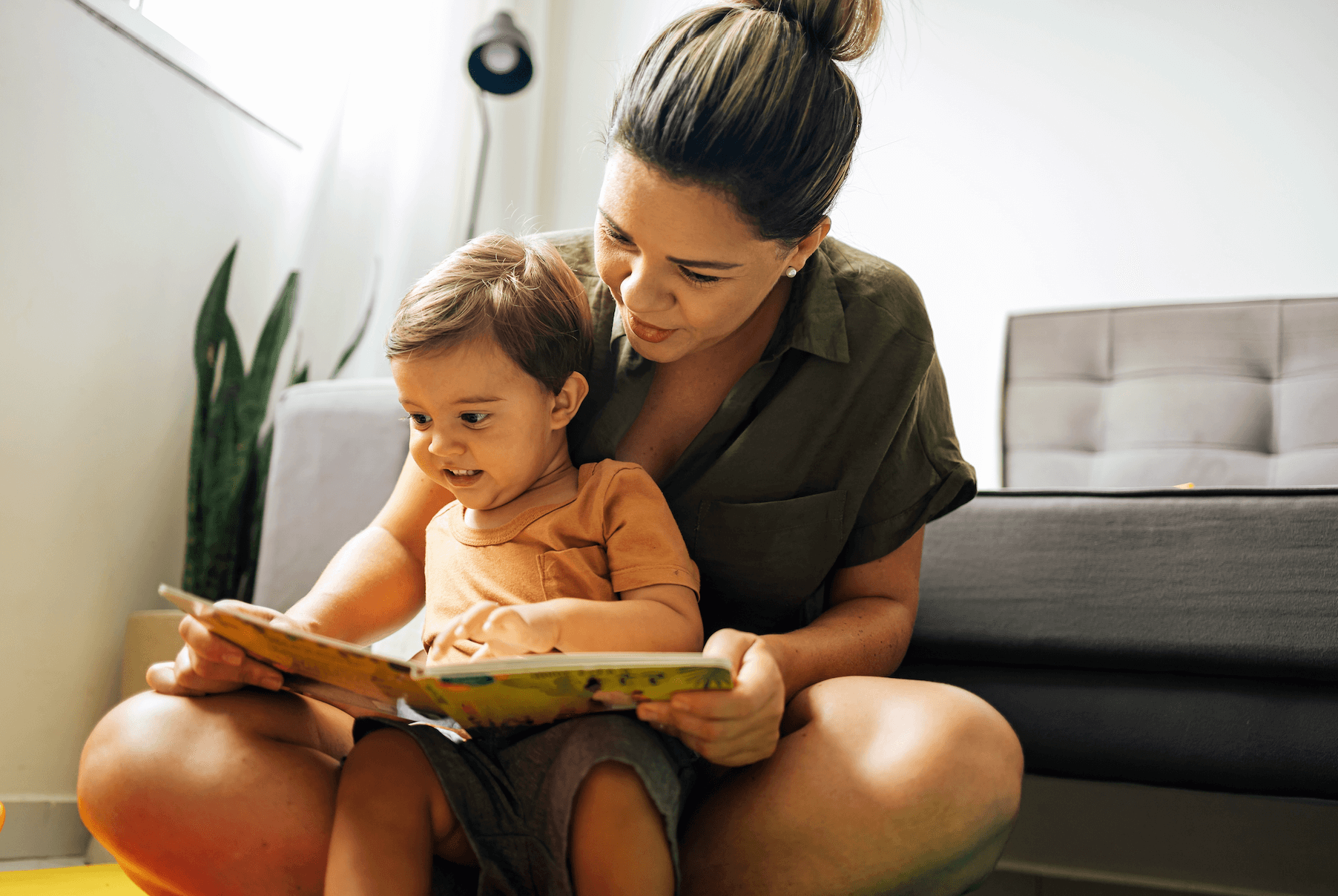10 Favorite Wordless Picture Books for Toddlers
Have you ever come across a book that tells a story without using a single word? It might sound surprising, but wordless picture books are magical treasures that can work wonders for your toddler's language development journey.
In this blog post, we'll dive into the enchanting world of wordless picture books. We’ll:
Wordless Picture Books - My Go-To List!
If you’re looking to give wordless picture books a try, here are some of my personal favorites for toddlers!
You’ll notice that the my list has many ‘preschool’ books on it. BUT, the beauty of wordless picture books is that you can adjust how you tell the story to meet your child where they’re at developmentally (more on this below!). And, I love the idea that these books can grow with your toddler over time and as they get older than can start telling you the story!
Don’t forget to keep reading to learn how you can grow your toddler’s language skills using wordless picture books at home!
This post contains affiliate links. As an Amazon Associate, Toddler Talk earns from qualifying purchases. Proceeds help support these resources.
The Marvels of Wordless Picture Books
Imagine flipping through the pages of a book and being whisked away into a world of captivating images, where the story unfolds without a single word. These are the enchanting wonders of wordless picture books. These books rely solely on the power of beautifully crafted illustrations to engage, inspire, and ignite your toddler's imagination. While it might seem unconventional, these books are a goldmine of opportunities for language growth and cognitive development.
Setting the Stage for Language Development
Why should you consider introducing wordless picture books to your toddler's reading repertoire? Well, here's the magic – these books invite your little one to become an active participant in storytelling. As you engage together, you'll witness the following incredible benefits:
1. Building Vocabulary: Although wordless, these books are rich in visual vocabulary. As you explore the images together, you'll have ample opportunities to introduce new words, descriptive terms, and action verbs, helping your toddler expand their language horizons.
For toddlers, this is one of the biggest benefits to wordless picture books! You can label and use short phrases, rather than reading sentences, to help them learn language at their level. And, they can label the actions and things they see in the illustrations too!
2. Bonding Time: Sharing wordless picture books provides a precious opportunity for quality bonding. As you explore the visuals together, you're creating a shared experience that strengthens your connection and opens avenues for communication.
3. Igniting Imagination: Without the limitations of words, your toddler's imagination is set free to create stories, characters, and scenarios that are uniquely their own as they get older. These books are like blank canvases waiting to be filled with their creative ideas.
4. Fostering Critical Thinking: Analyzing the illustrations encourages your toddler to think critically, predict outcomes, and identify cause-and-effect relationships. These skills are vital for problem-solving and cognitive development.
5. Nurturing Storytelling Skills: Wordless picture books empower your toddler to weave narratives based on the images they see. This process nurtures their ability to organize thoughts, sequence events, and communicate effectively. You might even use some of these tips for teaching toddlers storytelling as you read wordless picture books!
Tailoring the Experience to Your Toddler's Level
Every toddler is a unique bundle of energy, curiosity, and budding linguistic abilities. Customizing the wordless picture book experience to suit your toddler's level ensures maximum engagement and learning. Here's how you can make the most of this enriching adventure:
If your child uses gestures to communicate:
When you're flipping through the book, point to the pictures and say what you see. If there's a dog, point and say "dog!" Watch closely – your toddler might start pointing too. When they do, say what they're pointing at!
If your child uses single words to communicate:
Just like before, point to those pictures and say what's happening. Use single words to label things, people, and actions; and simple sentences to tell the story of each page. If there's a kid riding a bike, you could say "He’s riding the bike!" And if the illustration is of a boy riding a bike at the park, you can also point out and label the “sidewalk” “helmet” and “squirrel” whose running through the grass in the background.
Also be sure to pause or give your little one a turn to label the things they notice! This way they can help you “read” the story.
If your child talks in phrases and sentences:
Take turns with your little one to describe what's going on. Encourage them to tell you what they see – even if it's just a few words put together. This part is about having fun and chatting back and forth about the pictures.
As you're talking about the pictures, try using some Wh- questions like "Where is the dinosaur hiding?" or "Why’s the bear is sad?" This opens up a whole world of back-and-forth conversations about the story.
Oh, and don't forget about those awesome describing words! Introduce your toddler to cool words like "big," "fast," and "silly." It's a fantastic way to make the story even more exciting at every level!
A few more notes about wordless picture books:
-
The point of wordless picture books is to tell stories using only illustrations, letting parents and kids explore and create their own narratives through the pictures. These books are like exciting puzzles where you get to decode emotions, predict what might happen next, and imagine characters' dialogues. They're not just about reading – they're about sparking imagination, building vocabulary, and having fun while learning.
-
Wordless picture books are great for all ages. You can modify your story to meet the developmental level of your child.
Written By: Stephanie Hatleli, MS CCC-SLP
© 2020-2025. Stephanie Keffer Hatleli, MS CCC-SLP. All Rights Reserved.
The content offered on ToddlerTalk.com is for informational purposes only. Toddler Talk is not engaged in rendering professional advice, whether medical or otherwise, to individual users or their children or families. No content on this site, regardless of date, should ever be used as a substitute for direct medical advice from your doctor, speech-language pathologist, or other health professional. By accessing the content on ToddlerTalk.com, you acknowledge and agree that you are accepting responsibility for your child’s health and well-being. In return for providing you with information related to home speech and language practice, you waive any claims that you or your child may have as a result of utilizing the content on ToddlerTalk.com.














